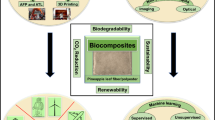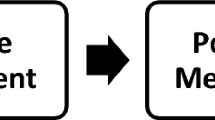Abstract
Quantitative analysis was performed via image processing to identify the relationship between the tensile strength and the thickness of the CrxBy phase layer at the interface of brazed 304 stainless steel with Ni-based filler metal (MBF20). The experimental design was based on the Taguchi method to determine the relative contributions of the processing conditions, including the brazing temperature, heating rate, holding time, and filler metal thickness. The CrxBy phase at the brazement interface was extracted by an image-processing method from backscattered electron imaging; the numerically defined thicknesses of the CrxBy phase layers developed under varied processing conditions were calculated. The tensile strengths at temperatures of 25 °C and 650 °C were measured for specimens brazed under identical experimental conditions based on the Taguchi method and the post-tensile testing fracture surfaces were analyzed. Regarding the relationship between the thickness of the CrxBy phase layer, as determined through the image processing of the microstructure, and the tensile strength at 25 °C, thicker CrxBy layers deteriorated the tensile strength of the brazement interfaces. Although a slight discrepancy occurred in the brazement tensile strengths between the testing temperatures of 25 °C and 650 °C, the elevated temperature during tensile testing affected the brazed interface microstructure; with this consideration, the overall results for both tensile strength tests corresponded to the quantitatively analyzed CrxBy phase layer thicknesses. From the relationship between CrxBy layer thickness and tensile strength, the heating rate is the most effective processing condition to achieve high bonding strength, because changes in heating rate compared to those of other processing conditions have the greatest effect in changing the CrxBy phase layer thicknesses and tensile strength. Therefore, the results confirmed that the image-processing method enabled accurate quantitative analysis of the microstructure, permitting prediction of the mechanical strength of the joint.












Similar content being viewed by others
References
1. Q. Li, G. Flamant, X. Yuan, P. Neveu, and L. Luo: Renew Sust Energ Rev, 2011, vol. 15, pp. 4855-75.
D.L. Olson: ASM Handbook: Welding, Brazing, and Soldering. ASM International, Ohio, 1993.
M.M. Schwartz: Brazing. ASM International, Ohio, 2003.
4. A. Rabinkin: Sci Technol Weld Joi, 2004, vol. 9, pp. 181-99.
5. W. Jiang, J. Gong, and S.-T. Tu: Mater Des, 2010, vol. 31, pp. 648-53.
J.R. Davis: Stainless Steels. ASM International, Ohio, 1994.
7. A. Rabinkin, E. Wenski, and A. Ribaudo: Weld J, 1998, vol. 77, pp. 66-75.
A. Rabinkin and H. Liebermann: Rapidly Solidified Alloys: Processes, Structures and Properties, and Applications, H.H. Liebermann, ed., Decker, New York, 1993.
A. Rabinkin: Proceedings of the International Brazing and Soldering Conference, 2000, pp. 437–44.
10. E. Lugscheider, and K. Partz: Weld J, 1983, vol. 62, pp. 160.
11. F. Wang, Q. Wang, B. Yu, B. Xiao, and Z. Ma: J Mater Process Tech, 2011, vol. 211, pp. 1804-9.
12. C. Ou, and R. Shiue: J Mater Sci, 2003, vol. 38, pp. 2337-46.
13. W.-C. Jiang, J.-M. Gong, H. Chen, and S. Tu: J Press Vess-T ASME, 2008, vol. 130, pp. 041203.
14. W.-C. Jiang, G. Jian-ming, and T. Shan-dong: Mater Design, 2010, vol. 32, pp. 763-42.
15. J. Lemus-Ruíz, J. Verduzco, J. González-Sánchez, and V. López: J Mater Process Tech, 2015, vol. 223, pp. 16-21.
16. N. Philips, C. Levi, and A. Evans: Metall Mater Trans A, 2008, vol. 39, pp. 142-9.
17. H. Chen, J.-M. Gong, and S.-T. Tu: Sci Technol Weld Joi, 2009, vol. 14, pp. 32-41.
18. E. Leone, A. Rabinkin, and B. Sarna: Weld World, 2006, vol. 50, pp. 3-15.
19. X. Yuan, M.B. Kim, Y.H. Cho, and C.Y. Kang: Metall Mater Trans A, 2012, vol. 43, pp. 1989-2001.
20. R.K. Roy, H. Bapari, A. Panda, and A. Mitra: Technol Weld Joi, 2013, vol. 18, pp. 216-21.
21. G. Chakraborty, P. Chaurasia, S. Murugesan, S. Albert, and S. Murugan: J Mater Process Tech, 2017, vol. 33, pp. 1372-8.
W. Zhu, H. Jiang, H. Zhang, S. Sun, and Y. Liu: Mater. Sci. Technol., 2017, pp. 1–8.
23. Y. Chen, H. Cui, B. Lu, and F. Lu: Materials, 2017, vol. 10, pp. 385.
24. W. Jiang, J. Gong, and S.-T. Tu: Mater Des, 2010, vol. 31, pp. 2157-62.
25. N. Wu, Y. Li, and Q. Ma: Mater Des, 2014, vol. 53, pp. 816-21.
26. W. Jiang, J. Gong, H. Chen, and S.-T. Tu: Int J Pres Ves Pip, 2008, vol. 85, pp. 569-74.
27. X. Yuan, C.Y. Kang, and M.B. Kim: Mater Charact, 2009, vol. 60, pp. 923-31.
28. D.Y. Park, S.K. Lee, J.K. Kim, S.N. Lee, S.J. Park, and Y.J. Oh: Mater Charact, 2017, vol. 130, pp. 278-84.
29. G. Taguchi: Introduction to quality engineering: designing quality into products and processes. Asian Productivity Organization, Tokyo, 1986.
30. C. Ji, N. Loh, K. Khor, and S. Tor: Mat Sci Eng a-Struct, 2001, vol. 311, pp. 74-82.
Acknowledgment
This work was conducted under the framework of the Research and Development Program of the Korea Institute of Energy Research (KIER) (B8-2413-03).
Author information
Authors and Affiliations
Corresponding author
Additional information
Manuscript submitted September 19, 2017.
Rights and permissions
About this article
Cite this article
Park, D.Y., Lee, S.K. & Oh, Y.J. Taguchi Analysis of Relation Between Tensile Strength and Interfacial Phases Quantified via Image Processing. Metall Mater Trans A 49, 4684–4699 (2018). https://doi.org/10.1007/s11661-018-4811-0
Received:
Published:
Issue Date:
DOI: https://doi.org/10.1007/s11661-018-4811-0




